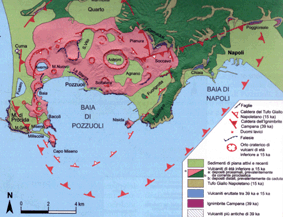“Sea routes” in Risk Management Planning. The case study of Bacoli
DOI:
https://doi.org/10.6092/2281-4574/2709Keywords:
Safety & security, Large scale plans & projects, Social practicesAbstract
The coastal region from Bacoli to Castellammare di Stabia contains, besides an alternation of fine landscapes and large areas of unplanned urban sprawl, different natural risk elements, object of planning tools that affecting substantially in the urban policies and urban plans.
If a Civil Protection and Emergency Plan, in fact, is a project of all activities and procedures to be adopted to deal with a disaster expected in a region, it is evident that the coordination with urban planning is fundamental. This, in particular, in sensitive areas such as coastal ones.
In the article, using the case study of the Italian city of Bacoli (near Naples), I’ll explore the possibilities offered in emergency planning, from the sea as a specific escape route in case of drought. The reflection moves from an examination of the particular orographic and geographic Phlegraean coast, the topography of the area, the level of interconnections and infrastructures. The strategies developed during the preparation of the plan of emergency and civil protection, from which this article starts, identify the waterfront area, specially adapted, infrastructured and safety, a fundamental option in the management of major emergencies of the Phlegraean area.
Downloads

Downloads
Published
Issue
Section
License
Gli autori che pubblicano su questa rivista accettano le seguenti condizioni:- Gli autori mantengono i diritti sulla loro opera e cedono alla rivista il diritto di prima pubblicazione dell'opera, contemporaneamente licenziata sotto una Licenza Creative Commons - Attribuzione che permette ad altri di condividere l'opera indicando la paternità intellettuale e la prima pubblicazione su questa rivista.
- Gli autori possono aderire ad altri accordi di licenza non esclusiva per la distribuzione della versione dell'opera pubblicata (es. depositarla in un archivio istituzionale o pubblicarla in una monografia), a patto di indicare che la prima pubblicazione è avvenuta su questa rivista.
- Gli autori possono diffondere la loro opera online (es. in repository istituzionali o nel loro sito web) prima e durante il processo di submission, poiché può portare a scambi produttivi e aumentare le citazioni dell'opera pubblicata (Vedi The Effect of Open Access).

